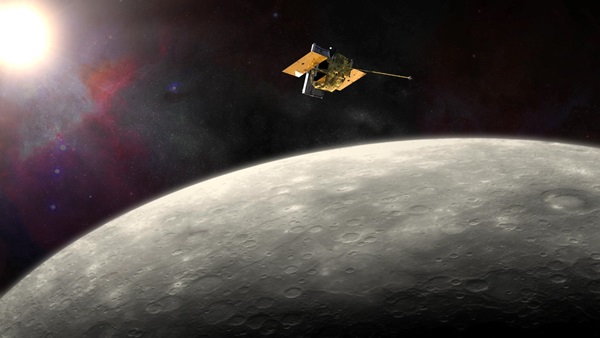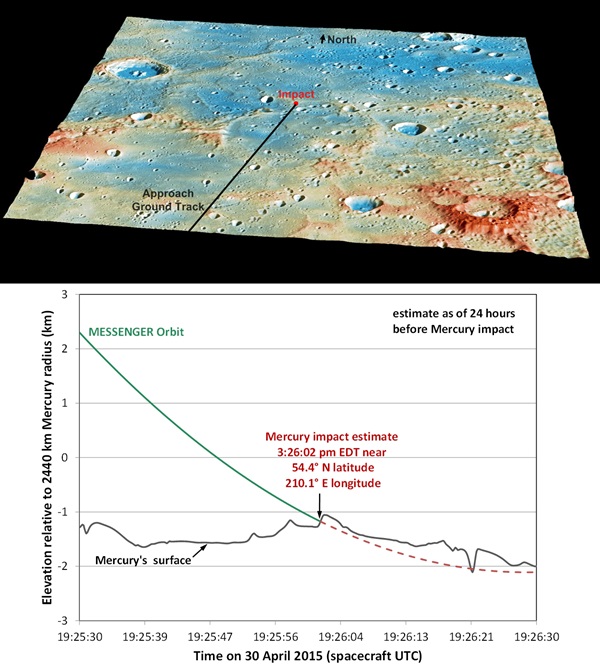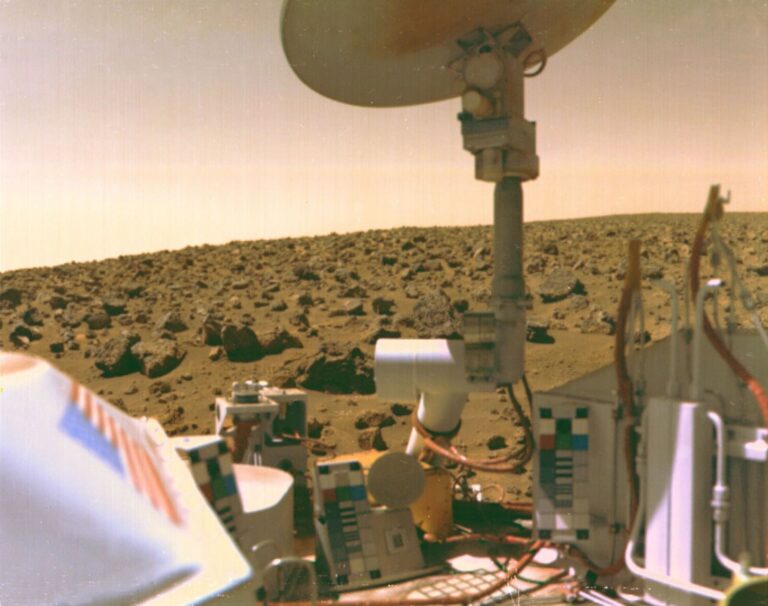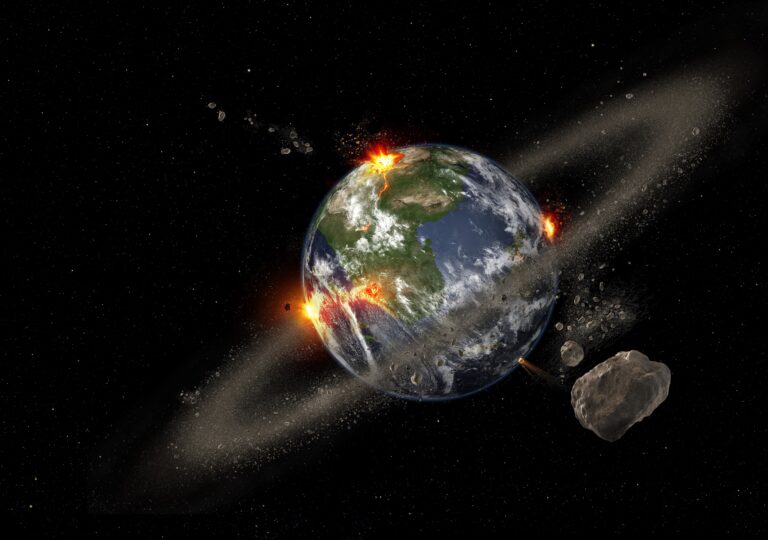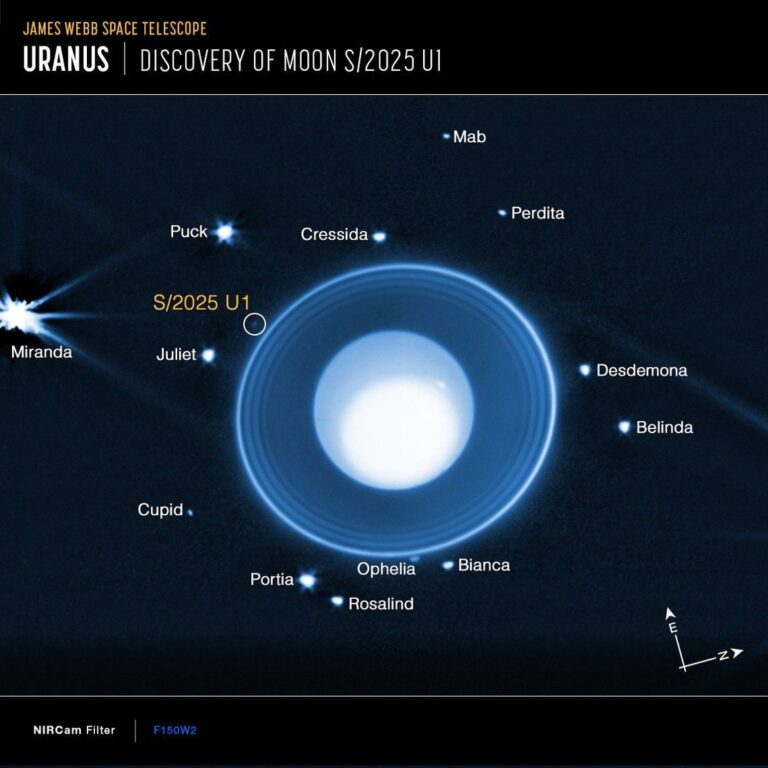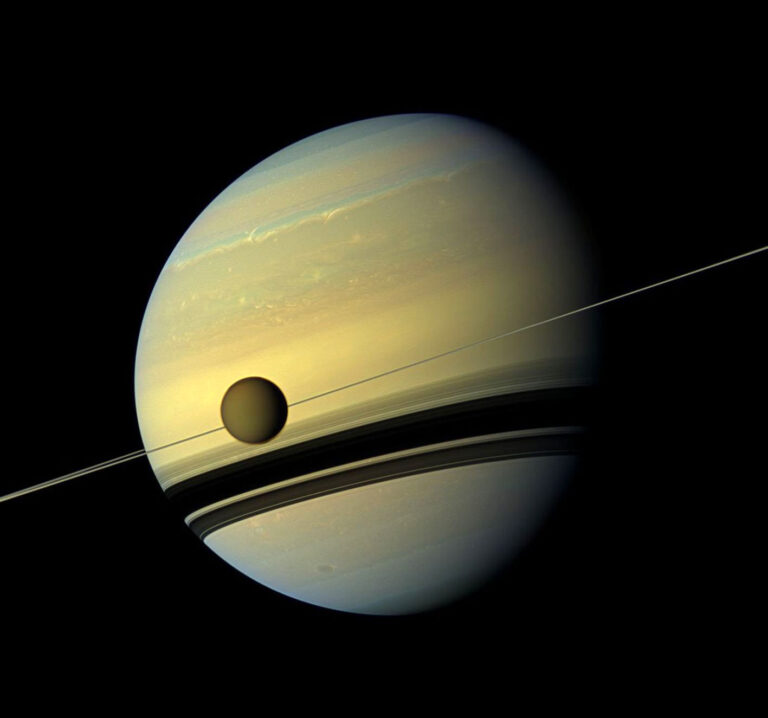Key Takeaways:
The robotic spacecraft MESSENGER has run out of fuel. With no way to make major adjustments to its orbit around the planet Mercury, the probe will smash into the surface at more than 8,750 mph (3.91 km/s). The impact will add a new crater to the planet’s scarred face that engineers estimate will be as wide as 52 feet (16 meters).
The end is predicted to come at about 3:26 p.m. EDT today.
Editor’s note: MESSENGER impacted the surface of Mercury at about 3:26:02 p.m. EDT.
The mission plan called for MESSENGER to spend one Earth year at Mercury, but when early findings raised new questions, NASA granted two mission extensions for a total of three additional years. Mission engineers also found ways to save fuel, such as maneuvering the spacecraft with a technique called solar sailing, which allowed an extra month of operations in orbit.
The only previous expedition to see the planet up close was Mariner 10 in the 1970s. It provided valuable scouting reports, but since it only flew by, it left large gaps in the images of Mercury’s surface. MESSENGER not only filled in those blank places on the map, its suite of powerful instruments delved deep into the small world’s many mysteries.
Mercury is not the garden spot of the solar system. It’s a small airless sphere, only slightly larger than Earth’s Moon, with stark and foreboding landscapes. Daytime temperatures can reach about 800° F (430° C) and drop to –290° F (–180° C) at night.
But MESSENGER brought to light the intricacies of an intriguing world. The mission discovered a surface rich in diverse chemistry, including volatiles. It sensed a bizarrely offset magnetic field. It photographed strange “hollows” where material seems to have boiled away into space under the scorching sun. It mapped vast volcanic deposits, found that the entire planet has shrunk by as much as 4 miles (7km) in radius, and, of all things, uncovered deposits of water ice in the depths of polar craters where the Sun never shines.
When MESSENGER disappears behind Mercury’s horizon for the last time, no spacecraft will scan its strange surface until the European Space Agency’s BepiColombo mission arrives in the 2020s. But for many years to come, planetary explorers will be pouring over the gigabytes of information that MESSENGER sent home.

